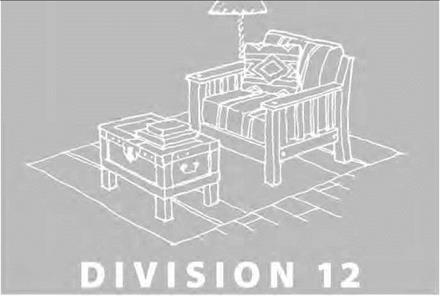Laundry Appliances
Washers and dryers with porcelain-on-steel or stainless steel interiors are preferable to those with plastic interiors. Although gas dryers are more energy efficient than electric dryers, they cause the same pollution problems as gas ranges. By planning a laundry room with easy access to a drying yard, you can take advantage of the most energy efficient of all dryers: the sun.
Dryers should be vented directly to the outdoors. Some heat recovery devices are available that recirculate the hot air from the dryer back into the house. We do not recommend these because they do not sufficiently filter fine particles and, if a gas dryer is being used, combustion gases can be released into the indoor air instead of being vented outdoors.
Vacuum Cleaners
Conventional portable vacuum cleaners suck air through a filter bag and then pump the “cleaned” air back into the room. The air that is returned is only as clean as the filtering mechanism is efficient. In fact, conventional vacuuming can stir up dust and pollen to such an extent that the ambient air is more polluted with small particulate matter than it was before the cleaning. Several brands of HEPA vacuums are available and are far superior to conventional vacuum cleaners. Their “high – efficiency particulate air” filter effectively traps microscopic particulate matter. Water – filter vacuums were popular before the availability of HEPA vacuums. They can become a
reservoir for mold and bacteria unless thoroughly dried after each use.
If you are building a new home, you have the opportunity to install a central vacuum system. When the motor and dirt receptacles are located remotely in a basement, garage, or utility room, central vacuums avoid the pollution problems associated with most portable models. Although more expensive than conventional portables, central vacuums cost only slightly more than a good HEPA or water-filter model. They are convenient and easy to operate. The hose is simply plugged into a wall receptacle and there is no machinery to lug around. We recommend central vacuums that exhaust air directly to the outdoors as this will prevent any small particles missed by the collection bag from being exhausted back into the home.
American Institute of Architecture, Denver Chapter, and Architects/Designers/Planners for Social Responsibility. Sustainable Design Resource Guide. AIA/ADPSR, 2005. See aiasdrg. org. Information about energy efficiency and appliances.
Ao, Lono Kahuna Kapua. Don’t Drink the Water:
The Essential Guide to Our Contaminated Drinking Water and What You Can Do About It. Kali Press, 1998.
Bower, Lynn Marie. 77re Healthy Household. Healthy House Institute, 1995. Has a useful section on household cleansers.
Conacher, Duff. Troubled Waters on Tap: Organic Chemicals in Public Drinking Water Systems and the Failure of Regulation. Center for Study of Responsive Law, 1988.
EPA Safe Drinking Water Hotline, 800-426-4791, e p a. gov/ s afe water.
Goldbeck, David, The Smart Kitchen: How to Design a Comfortable, Safe, Energy-Efficient, and Environment-Friendly Workspace. Ceres Press, 1994.
The Good Water Company, Stephen Wiman, 2778 Agua Fria, Bldg. C, Ste. B, Santa Fe, NM 87501, 800-471-9036,505-471-9036, goodwaterglobal. com. Water filtration and consultation.
Hague Quality Water International, 4343 South Hamilton Road, Groveport, OH 43125, 614-836-2115. Excellent whole-house water purification system.
Ingram, Colin. The Drinking Water Book: A Complete Guide to Safe Drinking Water. Ten Speed Press, 1991. A guide for safe drinking water.
National Testing Laboratories, Inc., 6555 Wilson Mills Road, Cleveland, OH 44143,800-458-3330, watercheck. com. Comprehensive water testing.
Ozark Water Service and Air Services, 114 Spring Street, Sulphur Springs, AR 72768, 800-835-8908, ozarkwaterandair. org. For air and water testing and consultation regarding toxic gases, molds, asbestos, volatile organic compounds (VOCs), pesticides, gas leaks, EMFs, and radon.







Leave a reply